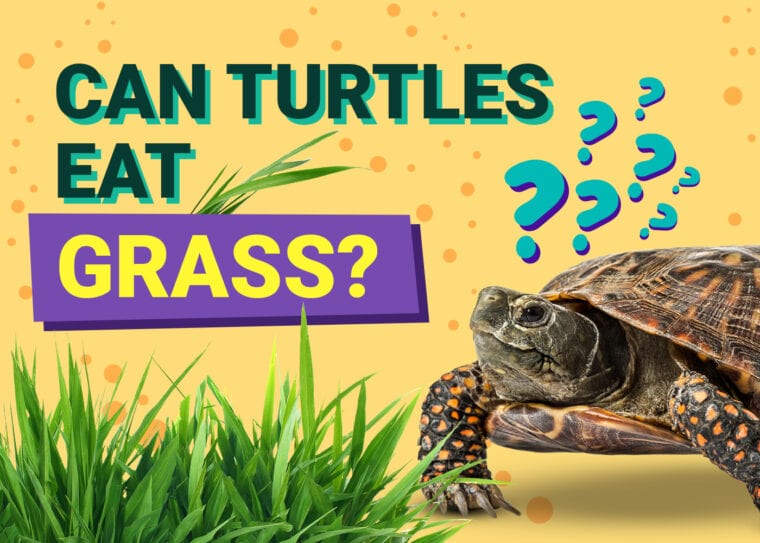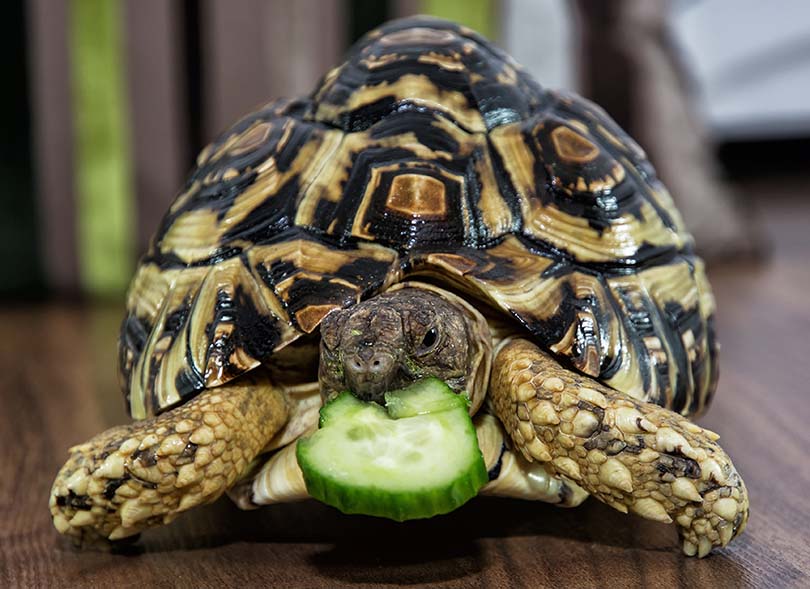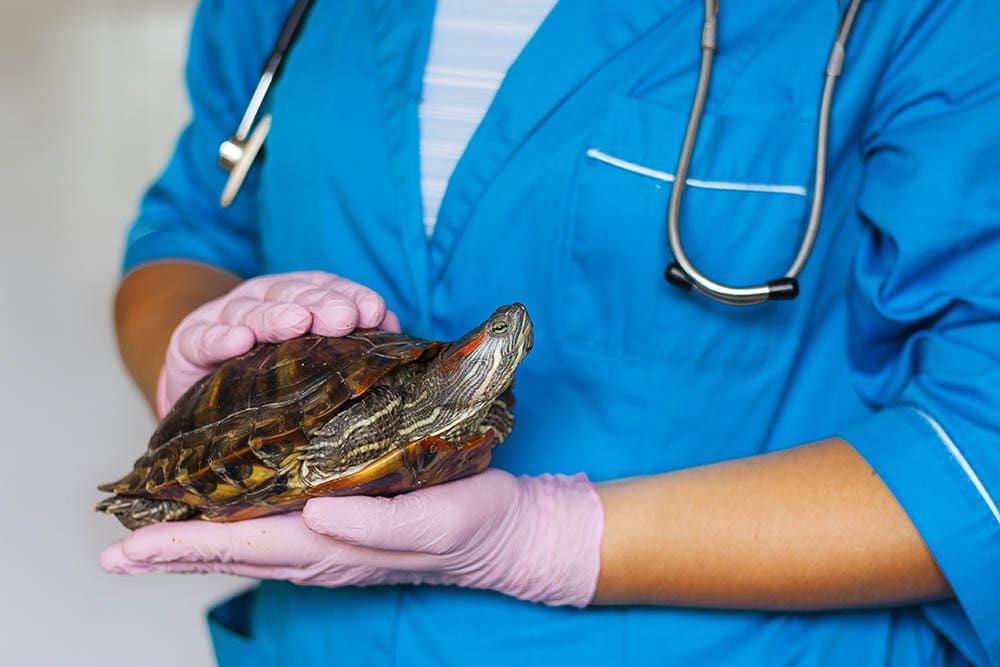
The majority of turtles are omnivores, so they eat both animal/insect proteins and plant material. Though dietary requirements vary depending on the turtle’s species, in the wild, most turtle species eat grass as part of their diets, both on land and in water.
Therefore, you can feed grass to your turtle, but this should make up varying proportions of their whole diet depending on the species. It is important to know the nutritional requirements of the particular species of turtle that you have.
Is Grass Safe for Turtles?
Yes. Most turtles—especially adult turtles, as they tend to become more herbivorous with age—derive some of their nutrients from various types of grasses and plant matter in the wild. Juvenile and adult sea turtles eat a lot of seagrasses and algae. Grass is a source of minerals, fiber, vitamins A, B, and D, and folic acid. Some of the grass types that are safe for land turtles include:
Lawn grass can also be offered, as long as it’s free of pesticides and herbicides. The key to keeping a turtle healthy and happy, however, is to provide plenty of variety in the foods you offer. Turtles typically eat a number of vegetables, protein sources, and sometimes fruit as an occasional treat.

What Else Do Turtles Eat?
In addition to grasses, turtles eat a very varied diet consisting of plant and animal-based foods. However, different species have different needs, so it’s best to discuss an appropriate diet for your breed of turtle with a reptile vet to make sure they’re getting the right ratio of each food type.
Age is also a factor to consider—younger turtles tend to eat more insect proteins to help them grow, whereas adults lean toward more herbivorous fare. Again, this is why it’s important to talk to your vet about your turtle’s specific age and breed requirements.
The standard ratios for an adult omnivorous turtle are 50% plant matter and 50% animal-sourced material. Fruits can be offered occasionally in moderation, as can live or freeze-dried insects and commercial turtle treats.
Here are some foods that omnivorous turtles commonly eat as part of a varied diet, but these lists are not exhaustive:
Plant-based Foods

Leafy greens should make up the largest percentage of your turtle’s plant intake, but other vegetables, like carrots and cucumber, can also be fed, just in lesser amounts.
Animal Proteins

Turtles can eat a variety of animal proteins, including live prey. What you decide to offer may differ depending on the type of turtle you have, for example, if you have an aquatic turtle, you may choose to offer live feeder fish or shrimp.
Avoid taking these protein sources from the wild and instead, stick to buying them from stores or raising them yourself to prevent contamination or poisoning by insecticides and the like. Acceptable animal proteins for turtles include:
Fruit

Fruit shouldn’t make up a large part of the overall diet, but it can be enjoyed as a treat from time to time in small pieces. Options include:
Final Thoughts
To sum up, many turtle species can eat grass and do so often in the wild, but the diets of both land turtles and aquatic turtles should be very varied, with plants, vegetables, and protein sources regularly rotated to provide the best nutrition.
Again, we highly recommend meeting with an exotic vet to talk about specific dietary needs as these can differ by species, health and age.
Featured Image Credit: Scottslm, Pixabay








